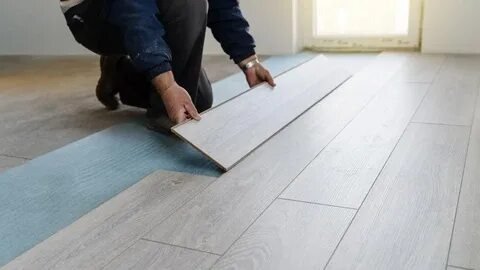When it comes to designing or remodeling your home, few decisions have as lasting an impact as your choice of flooring. Among the myriad options available, tile flooring stands out as one of the most versatile and practical solutions — especially for moisture-prone and high-traffic areas like kitchens and bathrooms. However, tile is not limited to just these spaces. Its durability, aesthetic range, and functional benefits make it suitable for almost every corner of a home or commercial property.
In this article, we explore why tile is such a great option not only for traditional wet areas but also for living rooms, hallways, entryways, and more. We’ll also discuss how tile complements broader home improvement goals, such as enhancing your home’s value and reducing long-term maintenance.
1. Moisture Resistance for Wet Environments
One of tile’s biggest selling points is its natural resistance to moisture. Whether it’s porcelain, ceramic, or natural stone, properly installed tile prevents water from penetrating beneath the surface — a major advantage in areas like bathrooms, laundry rooms, and kitchens where water spills and humidity are frequent.
In kitchens, tile flooring helps prevent damage from cooking spills, dishwasher leaks, and general wear from foot traffic. In bathrooms, where standing water and condensation are common, tile resists warping and mold growth far better than materials like wood or carpet.
2. Easy Maintenance and Cleaning
Tile flooring is notably low-maintenance. Regular sweeping and occasional mopping are usually all that’s needed to keep the surface looking pristine. Unlike some other flooring materials, tiles don’t trap dust, pollen, or pet dander, making them a great choice for those with allergies.
This makes tile especially ideal for busy households and high-use areas. For example, an entryway lined with tile will continue to look good even after a muddy boot invasion or rainy-day traffic.
3. Aesthetic Versatility
Modern tile comes in an astonishing array of styles, sizes, colors, and finishes. Whether you’re going for a rustic stone look, sleek marble appeal, or even a hardwood plank imitation, there’s a tile to match your vision.
Large-format tiles, mosaic designs, textured surfaces, and even 3D patterns are now widely available. These options allow homeowners and designers to create unique layouts and themes for every room, from minimalist modern to Mediterranean elegance.
When working with professionals who specialize in floor staining and finishing, homeowners often aim to complement existing floor textures with new tile installations. For example, coordinating a stained hardwood living room with a tiled hallway using matching tones and transition strips can make the entire space feel seamless and cohesive.
4. Long-Term Durability
Tile is among the most durable flooring options available. High-quality porcelain tiles are rated for commercial use and can last decades without cracking or chipping when properly installed. In fact, it’s not uncommon for tiles to outlast the very buildings they’re placed in.
This level of durability means that tile is not only a wise investment for kitchens and bathrooms but also for entryways, sunrooms, and even outdoor patios. Its ability to withstand foot traffic, moisture, and impacts makes it an especially strong candidate for family homes and multi-generational residences.
5. Cost-Effectiveness Over Time
While tile flooring might have a higher upfront cost compared to some alternatives like vinyl or laminate, its long lifespan and minimal maintenance needs often make it more economical in the long run.
Additionally, quality tile installation can significantly boost a home’s market value — a fact that has not gone unnoticed by real estate professionals and homeowners looking to make strategic upgrades. Potential buyers often prioritize homes with tiled kitchens and bathrooms, recognizing the practical and aesthetic value of the material.
For homeowners seeking skilled labor and advice during remodeling projects, working with flooring contractors near me ensures that the tile is installed properly, with attention to subfloor preparation, grout sealing, and layout precision — all of which are critical for the long-term success of a tiled surface.
6. Eco-Friendliness and Sustainability
Tile flooring is also a smart choice for environmentally conscious homeowners. Many ceramic and porcelain tiles are made from natural materials and can be produced using sustainable methods. Some tiles are even made from recycled content.
In terms of health and safety, tiles do not emit harmful VOCs (volatile organic compounds), unlike certain synthetic flooring materials. This makes tile a solid choice for creating a healthy indoor environment, especially in bedrooms and nurseries.
7. Extended Applications Beyond Kitchens and Baths
While kitchens and bathrooms may be the obvious places for tile, many designers now use it in unconventional ways. For example:
-
Living rooms: Large tiles with a wood-look finish give the warmth of hardwood with none of the maintenance.
-
Basements: Tile resists moisture and mold — two major concerns in below-grade spaces.
-
Fireplaces and accent walls: Decorative tiles add a bold statement and texture to vertical spaces.
-
Mudrooms: Durable, waterproof, and easy to clean — tile is perfect here.
With modern radiant heating systems, tile also becomes more comfortable in colder climates, making it suitable even for bedrooms and open-concept living areas.
Final Thoughts
Tile flooring remains one of the most reliable, versatile, and visually compelling flooring choices on the market today. Whether you’re renovating a small powder room or reimagining your entire home layout, tile offers unmatched benefits in terms of longevity, design, and ease of care.
By working with local professionals and pairing tile with complementary flooring choices, you can create a space that is both functional and uniquely your own. Whether your project involves just one room or a full-home transformation, tile is a cornerstone worth considering — not just for kitchens and bathrooms, but well beyond.






